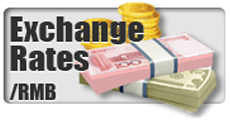PBC to issue RMB 30 billion offshore central bank bill in Hong Kong
2019-08-07 16:11:42 [Print]
On 6 August, the People's Bank of China (PBC) decided to issue two offshore Yuan central bank bills worth RMB30 billion (USD4.26 billion) in Hong Kong on 14 August, consisting of a three-month central bank bill worth RMB20 billion (USD2.84 billion) and an one-year central bank bill worth RMB10 billion (USD1.42 billion).
Affected by this news, the exchange rates of both onshore and offshore Yuan rebounded. Up to 8p.m. of 6 August, the exchange rate of onshore Yuan against U.S. dollar hovered at around 7.0180, up by 327 basis points from the previous trading day, and the exchange rate of offshore Yuan against U.S. dollar hovered at 7.0458, up by 493 basis points from the previous trading day.
On 5 August, the exchange rates of both onshore Yuan and offshore Yuan were lower than 7 for the first time after the exchange rate reform on 11 August, 2015, which attracted high attention from the market. On the evening of 5 August, PBC President Yi Gang noted that international economic situation and trade friction went through something new recently and the market expectation changed accordingly. Under such circumstance, the exchange rates of many currencies against U.S. dollar depreciated in August and the exchange rate of Yuan was affected to some extent, which was driven and determined by the market.
In response to U.S decision on listing China as a currency manipulator, PBC made clear that this label goes against the so-called quantitative criteria for currency manipulator drawn up by U.S. Department of the Treasury, appears as a willful behavior of unilateralism and protectionism, severely violates international rules and will exert significant influences on global economy and finance. China's managed floating exchange rate system is based on market supply and demand and adjusted according to currency basket. Therefore, the exchange rate of Yuan is decided by market supply and demand and is not manipulated by the government.
Affected by this news, the exchange rates of both onshore and offshore Yuan rebounded. Up to 8p.m. of 6 August, the exchange rate of onshore Yuan against U.S. dollar hovered at around 7.0180, up by 327 basis points from the previous trading day, and the exchange rate of offshore Yuan against U.S. dollar hovered at 7.0458, up by 493 basis points from the previous trading day.
On 5 August, the exchange rates of both onshore Yuan and offshore Yuan were lower than 7 for the first time after the exchange rate reform on 11 August, 2015, which attracted high attention from the market. On the evening of 5 August, PBC President Yi Gang noted that international economic situation and trade friction went through something new recently and the market expectation changed accordingly. Under such circumstance, the exchange rates of many currencies against U.S. dollar depreciated in August and the exchange rate of Yuan was affected to some extent, which was driven and determined by the market.
In response to U.S decision on listing China as a currency manipulator, PBC made clear that this label goes against the so-called quantitative criteria for currency manipulator drawn up by U.S. Department of the Treasury, appears as a willful behavior of unilateralism and protectionism, severely violates international rules and will exert significant influences on global economy and finance. China's managed floating exchange rate system is based on market supply and demand and adjusted according to currency basket. Therefore, the exchange rate of Yuan is decided by market supply and demand and is not manipulated by the government.




